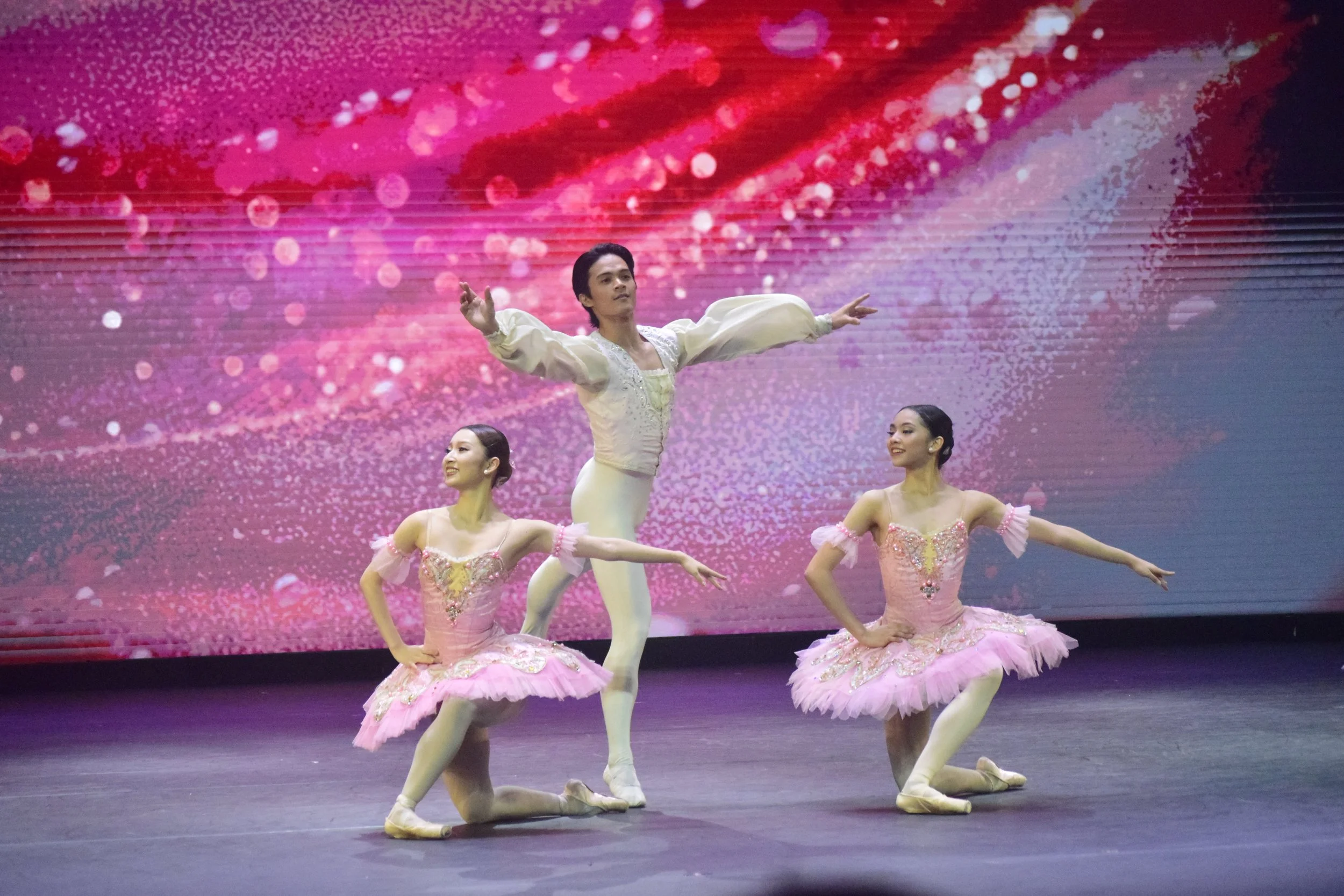Putting in the hours is key to becoming the best dancer, says BM artistic director Lisa Macuja Elizalde
Lisa Macuja Elizalde’s advice for young people who want to make a successful career for themselves is to commit to a goal, a career or a choice, then working towards achieving it. Photo by MarBi Photography
By Leah Salterio
For Lisa Macuja Elizalde, all the lessons she has learned in dance – through a 32-year performing career and also at the helm of Ballet Manila as artistic director – translate into essential skills that have helped her navigate life.
Ballet Manila artistic director Lisa Macula Elizalde leads the company class on stage at the Petaling Jaya Performing Arts Centre in Malaysia where the group recently had a successful run of Cinderella. Photo by Larry Salgado
“If you ask me, discipline, determination, hard work, perseverance, sense of commitment, (and) sacrifice are all hand in hand with any success story,” said the prima ballerina at a media conference for her company’s Florante at Laura, which is being restaged on October 3, 4 and 5 at Aliw Theater in Pasay City, the same venue where it had its world premiere a year ago.
Turning 61 on October 3, Macuja Elizalde reflected on how relying on those same values can shape anyone’s journey. “Nobody is born into success. Nobody is born a dancer. But it’s also what you make of yourself,” she insisted. “You may be born with talent, but if talent does not work hard, then hard work will still prevail. I’m an example of that. I was not born with a perfect body for ballet. But I really worked hard and I had coordination. I had other gifts that I was able to develop.”
If there’s anything that she would have changed, though, Macuja Elizalde said she would have been kinder to her body when she was a younger dancer. She started in ballet when she was only nine, but didn’t take dancing seriously until she was 18.
Ballet Manila marked its 30th anniversary in March with its Pearl Gala, showcasing the company’s excellence in classical dance steeped in the Russian Vaganova tradition. Soloist Rafael Perez and company artists Nanami Hasegawa (left) and Shamira Drapete in Pearls. Photo by Erickson dela Cruz
“Going back, I probably would not have danced through pain,” she shared. “I would not have pushed myself to dance when I was sick or when I was nursing injuries or just recovering from an injury.
“I probably would have mellowed down my schedule. I would not have pushed my body. There was a time I remember I was dancing Giselle with stress fractures and it was really painful. But you know when you’re young, you kind of think that it’s do or die. So I probably would be kinder to myself and just say, ‘Look, I’m injured. I cannot dance.’ Than force myself to go on stage even when I’m in pain, not feeling a hundred percent.”
Macuja Elizalde admitted she was “manic” when she was younger. “I wanted to do everything then,” she disclosed. “I didn’t want to say no to any opportunity to dance. I also felt a bit invincible. I guess when you’re young, you feel invincible. You had this technique.
“I no longer feel that now. I’m in pain. I have arthritis. My left hip is already completely replaced. Of course, I feel my age although I enjoyed a long career. I was dancing until I was 52. Not many ballerinas dance that long.”
Staying true to its ideal of bringing ballet to the people, Ballet Manila had a six-show run of its Swan Lake at Silliman University in Dumaguete last July, with principal dancers Mark Sumaylo and Abigail Oliveiro among the performers. Photo by The Weekly Sillimanian
Thankfully, even if she pushed herself through pain in the early years of her career, Macuja Elizalde said she has no regrets that keep her up at night. Even if she was forced to come home by circumstances – when she was not given the work visa to stay in London and possibly dance with the Sadler’s Wells. Ultimately, she felt she was really destined to return to the Philippines and become based here instead. She was just 20 at that time.
Having gained wisdom and experience in her chosen field in the decades since, Macuja Elizalde has been helping generations of young dancers achieve their full potential – both as artistic director of Ballet Manila and as the director and a teacher at the Lisa Macuja School of Ballet.
Macuja Elizalde’s advice for young people who want to make a successful career for themselves is to commit to a goal, a career or a choice. “Make a decision and commit,” she said. “Once a decision is made, then you commit to it and seek the best, possible way in order to attain that goal. I tell that to my kids.
“Committing to a decision to become the best computer programmer, for instance, you seek the best school that will teach you the skills to become a programmer. Once you are in that nurturing environment, whether it’s with a mentor, a teacher, a school or a company, then you work hard at achieving that.
Bringing in Mariinsky Ballet principal dancers Renata Shakirova and Kimin Kim for Don Quixote last August was a treat for both local audiences and for Ballet Manila’s own dancers. Photo by Giselle P. Kasilag
“You put in the hours. You have to sacrifice and try to achieve that balance of work-life. At the end of the day, what matters most, whether or not you feel happy and accomplished afterwards, is when you finally achieve that goal that you committed to, as early as possible, so that you give yourself time.
“Because time is really valuable. You can’t decide at the age of 40 to become a prima ballerina. It has to happen earlier in your life.”
Noting how many children nowadays tend to want instant gratification, she pointed out that nothing compares to doing the daily work needed to hone one’s talents and excel. “They do a workshop here or a three-day training here, (and they expect) they are going to become good instantly. That’s not the case, especially for a skill that takes years and years of practice. I would like encourage teens to develop perseverance and patience.
“Early on, you get the superior training, whether it’s in a university, a school, a ballet company or an institution. That training is your foundation and you build on that foundation. It can happen with any career. It doesn’t have to be a career in the performing arts or a dancing career.”









